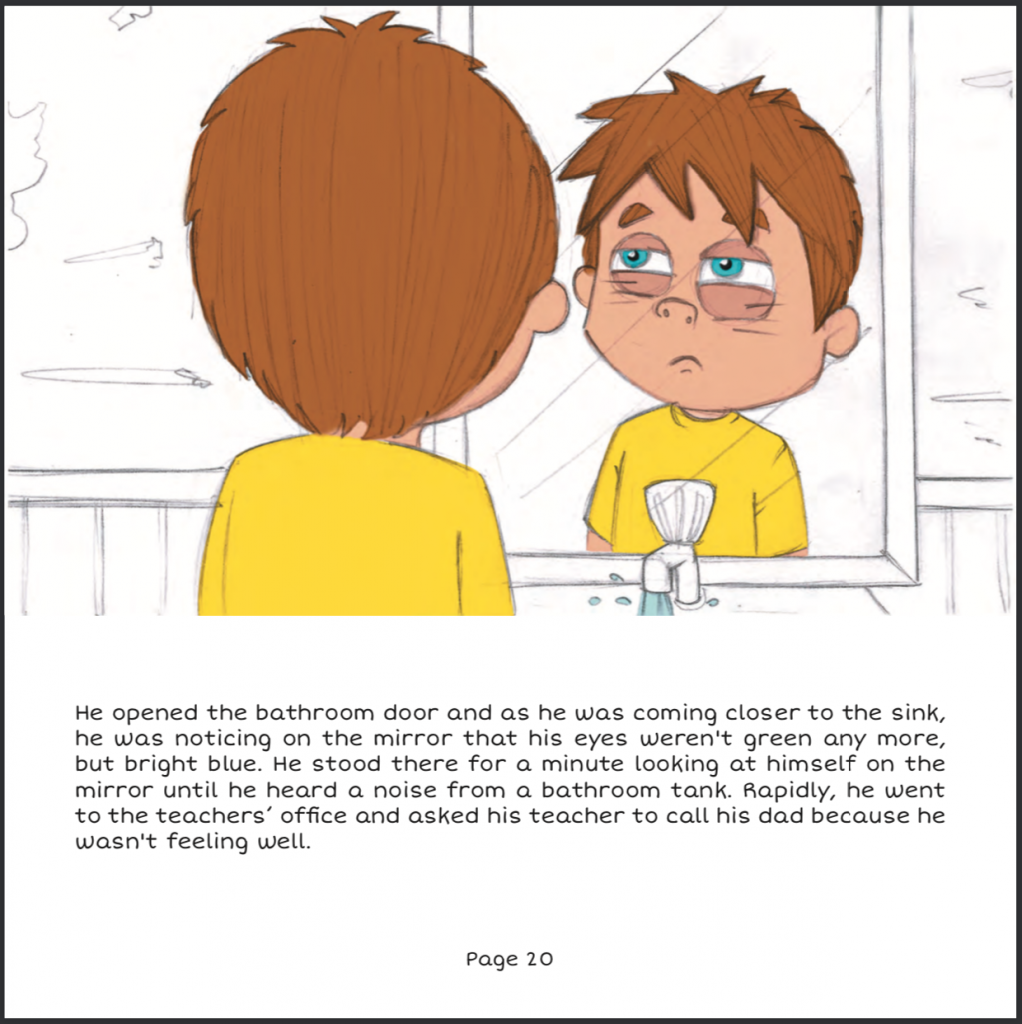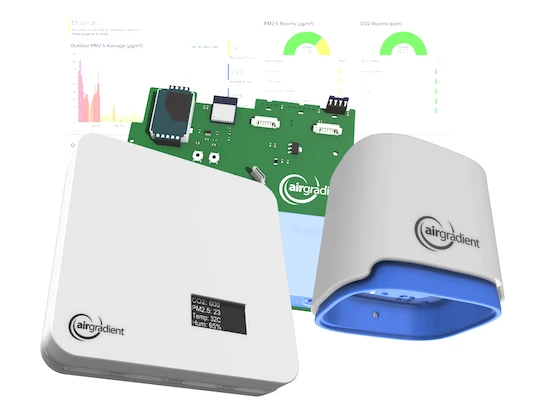Open and Accurate Air Quality Monitors
We design professional, accurate and long-lasting air quality monitors that are open-source and open-hardware so that you have full control on how you want to use the monitor.
Learn Moreby Achim Haug on August 1, 2020
As part of our newly launched AirGradient for Education initiative, we want to review educational material to help schools increase awareness on the important topic of air quality. It is rather difficult to find books explaining air pollution and its dangers for younger children so I was extremely happy to come across the book “Nicholas and his incredible Eyesight” by Sotirios Papathanasiou from the well-know See the Air blog.
The book is about Nicholas an 8-year-old boy who moves from a small town in Scotland into the big city of London. There he experiences itchy eyes from the bad air pollution in the city and suddenly starts to see small particles in the air and his eye color changes as well!
Together with his parents and his science teachers, he embarks on a journey of the effects of air pollution and how to deal with it… (I won’t tell you all what’s happening in the book, you need to read it for yourself! 😉
I did really enjoy reading the book as the story is very realistic and capturing. Many children will thoroughly enjoy reading the book and talking about it with their parents or teachers.
The illustrations in the book are very beautiful. Here is an example when Nicholas suddenly detected that his eye color changed!

I wanted to learn more about the background of the story so I contacted the author Sotirios with a few questions:
Achim: How did you become so passionate about air quality?
Sotirios: When people ask me why I become interested in air quality, you typically expect a response, “I was suffering from air pollution, or I had health issues and I couldn’t take it anymore”. However, in my case is a bit different because I am a very proactive person. Since my early adulthood, I saw a problem, and I knew it was time for people to become aware of it. Since then, I fight every day to raise awareness.
Achim: How did you get the idea to write this book about Nicholas?
Sotirios: I believe that each new generation is always a bit keener on environmental issues than previous generations, and I wanted to help them in that process of critical development of thinking. Then, I thought about what kind of book l would like to read if I was a child again. My childhood memories and the books that I had read helped me to shape the basic idea behind Nicholas’s journey.
Achim: Do you have recommendations on how teachers should ideally use these kinds of books with the children?
Sotirios: Great question, I think teachers should assign books like mine to kids as non-compulsory projects to read. Later all together, they could discuss inside the class what kids have learned from those stories. Teachers should also address all possible questions and share with all of us (the adults) what they have learned from kids and their comments. That way, we will empower parents too.
Achim: It seems your book primarily focuses on understanding the topic and the health impact but there is less emphasis on mitigation measures (e.g. purifiers, masks, ventilation system, etc.). Do you plan any follow up on what children can do to protect themselves from air pollution?
Sotirios: My story is fictional, so the main character addresses the issue by talking to the Local Council and demanding actions.I have received many comments from parents that want me to write sequels or additional books in this series. So, yes I am developing a story, but I don’t have a release date to share at the moment.
Achim: Do you think air pollution should have a higher importance in the climate change debate (e.g. Fridays for Future)? What do you think about the awareness level of air pollution among our younger generation?
Sotirios: There is a strong relationship between air pollution and climate change as the main sources for both issues are common, so when we address one we will consequently address the other, for example, when we switch from burning fossil fuels of any kind (diesel, wood burning, coal, biomass) to renewable energy. Definitely, younger generations are more aware maybe because they have easy access to the information plus there is much more information available now than 20 years ago. When I was at school, I remember my teacher talking about air pollution as a phenomenon that will only affect the marble statues in Greece through acid rain and not about the negative effects on human health.
There is a strong relationship between air pollution and climate change as the main sources for both issues are common, so when we address one we will consequently address the other, for example, when we switch from burning fossil fuels of any kind (diesel, wood burning, coal, biomass) to renewable energy. Definitely, younger generations are more aware maybe because they have easy access to the information plus there is much more information available now than 20 years ago. When I was at school, I remember my teacher talking about air pollution as a phenomenon that will only affect the marble statues in Greece through acid rain and not about the negative effects on human health.
Thank you Sotirios for the interview.
Curious about upcoming webinars, company updates, and the latest air quality trends? Sign up for our weekly newsletter and get the inside scoop delivered straight to your inbox.
Join our Newsletter
We design professional, accurate and long-lasting air quality monitors that are open-source and open-hardware so that you have full control on how you want to use the monitor.
Learn More